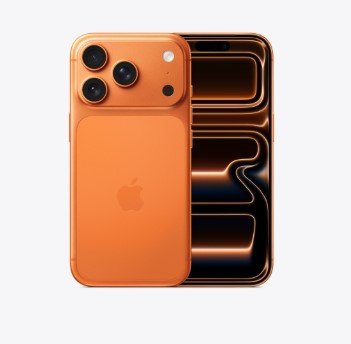Apple’s new iPhone 17 series is showing stronger demand than the iPhone 16 lineup from last year, based on early delivery lead times in major markets. Analysts at JP Morgan reported this trend just days after the device’s launch on September 9, 2025, pointing to high interest in the base model and the slim Air version.
Strong Start for iPhone 17 Pre-Orders
Demand for the iPhone 17 appears robust right from the start. JP Morgan’s note highlights that lead times, which measure wait periods for deliveries, are modestly longer than those for the iPhone 16 during its pre-order week in 2024. This suggests more consumers are eager to get their hands on the latest models.
In key regions like the United States, China, Germany, and the United Kingdom, these extended waits indicate a positive shift. For instance, the base iPhone 17 and the new Air model are seeing particular enthusiasm. The Air, designed to be ultra-thin, competes directly with slim devices from rivals like Samsung.
Pre-orders kicked off on September 12, 2025, and reports show sales breaking records in places like China. Local platforms there saw massive uptake in the first minutes, even with some shipment delays for the Air model due to regulatory issues around eSIM technology.

Comparing Lead Times to iPhone 16
Lead times offer a clear window into consumer interest. Longer waits mean higher demand, as supply struggles to keep up with orders. For the iPhone 17, these metrics are ahead of last year’s figures.
Here’s a quick comparison of average lead times during the first pre-order week:
| Model | iPhone 17 Lead Time (Days) | iPhone 16 Lead Time (Days) |
|---|---|---|
| Base | 4 | 0 |
| Air/Plus | 7 | 0 |
| Pro | 4 | 6 |
| Pro Max | 21 | 20 |
This data comes from tracking in the US market, which makes up about a third of Apple’s global iPhone shipments. The Pro Max model shows especially strong pull, with waits stretching to three weeks in some cases.
Analysts note that while base models are leading the charge, this does not spell trouble for the pricier Pro versions. If the trend holds, it could mean overall sales growth beyond what Apple expected internally.
Factors Driving the Demand Surge
Several elements are fueling this uptick. The iPhone 17 introduces fresh features like improved cameras, longer battery life, and a sleeker design in the Air model. These updates address user complaints from the iPhone 16 era, such as bulkiness in plus-sized phones.
Market conditions play a role too. In India, where Apple has ramped up local manufacturing, pre-orders are outpacing last year. Quick delivery services there promise phones in under 10 minutes in big cities, boosting accessibility.
Globally, the push toward AI integration in smartphones is creating buzz. Though Apple’s reveal left some investors wanting more AI details, everyday buyers seem focused on practical upgrades. This comes as Apple navigates challenges like slowing sales in China, where competition from local brands is fierce.
Economic factors, including easier financing options like EMI plans, are making high-end devices more reachable. In markets like India, about 70 percent of iPhone purchases happen through installments, broadening the buyer base.
Potential Challenges Ahead
Not everything is smooth sailing. The iPhone Air faces hurdles in China, with shipments paused over eSIM regulations. This could delay full rollout there, a critical market for Apple.
Supply chain issues might extend lead times further if demand keeps climbing. Analysts warn that if base model popularity overshadows Pro sales, it could affect Apple’s average selling price and profits.
On the stock side, Apple’s shares dipped after the launch due to muted AI hype. But positive demand signals could lift investor confidence, especially with projections of over 90 million units shipped in the first cycle, up from the iPhone 16’s estimates.
What This Means for Consumers and Apple
For buyers, longer lead times mean planning ahead if you want the hottest models. The Pro Max, in particular, might see waits into October 2025 in some regions.
Apple stands to benefit from this momentum. Strong early sales could help the company rebound from recent slowdowns and solidify its position in the premium smartphone space.
Key takeaways for potential buyers include:
- Check local availability early to avoid delays.
- Consider base or Air models for quicker delivery if Pro features are not essential.
- Watch for software updates that enhance AI capabilities post-launch.
Looking Forward in the Smartphone Market
This demand trend aligns with broader industry shifts. Rivals like Samsung and Google are also pushing AI and slim designs, heating up competition. Apple’s success with the iPhone 17 could set the tone for its fiscal year, with analysts eyeing unit sales growth in double digits year-over-year.
As more data rolls in from the first full week of sales, expect updates on whether this initial surge holds. For now, it looks like Apple has a hit on its hands.
What do you think about the iPhone 17 demand? Share your thoughts in the comments and pass this article along to fellow tech fans.
